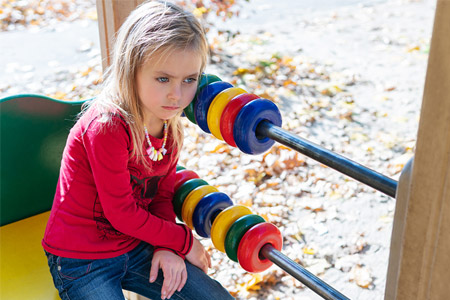 Migraine affects 10% of all children. Most develop the condition before they are 12 years old. About 25% will have outgrown the condition by age 22. The rest continue to suffer with migraine symptoms in adulthood as well. Research studies suggest that proper management of migraine symptoms during childhood may be able to reduce the frequency of attacks in adulthood.
Migraine affects 10% of all children. Most develop the condition before they are 12 years old. About 25% will have outgrown the condition by age 22. The rest continue to suffer with migraine symptoms in adulthood as well. Research studies suggest that proper management of migraine symptoms during childhood may be able to reduce the frequency of attacks in adulthood.
Children may experience migraine attacks differently from adults. The migraine attacks may be of a shorter duration and affect the entire head rather than just one side. Vomiting and abdominal pain could also be present. The headache may be acute, and the child may be in severe pain within 15 minutes from the onset of symptoms.
COMMON MIGRAINE TRIGGERS IN CHILDREN
- Disturbances in sleep habits (Sleeping too much or too little)
- Not drinking enough water
- Eating specific foods
- Skipping meals
- Stress
- Sudden, intense physical activity
- Bright lights including the glare and flickering of computer screens
- Cold or stomach flu
HOW MIGRAINE AFFECTS YOUR CHILD
Apart from the physical pain and discomfort, children can develop fear and anxiety about when the next migraine attack may occur. They may feel frustrated about having to miss school, sports, social events or other activities that might trigger their symptoms. Some children may develop “weekend migraine” which may occur when relaxing after a stressful week. This may negatively impact their social life and self esteem
STEPS TO TAKE IF YOUR CHILD IS SUFFERING FROM MIGRAINE
- Look for Clues Characteristic of Migraine: Does your child feel nauseous, shy away from bright lights or loud noises and go into a quiet room when complaining of a headache? Predictors for migraine in childhood include colic, turning the head from one side to another every few seconds, and vomiting cycles every few months as a baby. Car sickness is another possible indicator of migraine in children.
- Confirm the Diagnosis: There is no specific test to diagnose migraine. Get your child evaluated by a headache specialist to confirm the diagnosis based on a detailed history of symptoms and complete neurological exam. Your doctor will give specific recommendations to effectively manage your child’s migraine.
- Keep a Headache Diary: This is very valuable in helping identifying triggers and predicting when a migraine headache is likely to occur. It can also be used to judge the effectiveness of treatment.
- Watch out for Warning Signs: This may include tiredness, yawning, becoming very quiet or irritable, muscle pain, sudden food cravings, and confusion. These signs may occur 2 to 24 hours before the onset of a migraine attack.
- Set up a migraine-friendly routine: Migraine attacks can occur at any time. Only from experience do parents and children learn what the triggers are and how to avoid them. Many times, it is a combination of factors and not just one trigger. Setting up a regular routine about sleeping, eating, and activity for your child can help identify and avoid migraine triggers.
- Use medication only as recommended: Depending on the severity of your child’s symptoms your doctor may prescribe anti-migraine medication. Take them only as recommended to avoid side effects.
- Provide Reassurance: Make your child understand that migraine can be effectively managed. The more educated children are about their condition, the more likely they will be to take positive steps to control their migraine symptoms rather than be controlled by them.
North Suffolk Neurology is a full-service Neurology, Headache Medicine, and Sleep Medicine practice consisting of dedicated, experienced staff committed to helping our patients and their families maintain and improve their health. To schedule an appointment, please call: (631) 364-9119.










